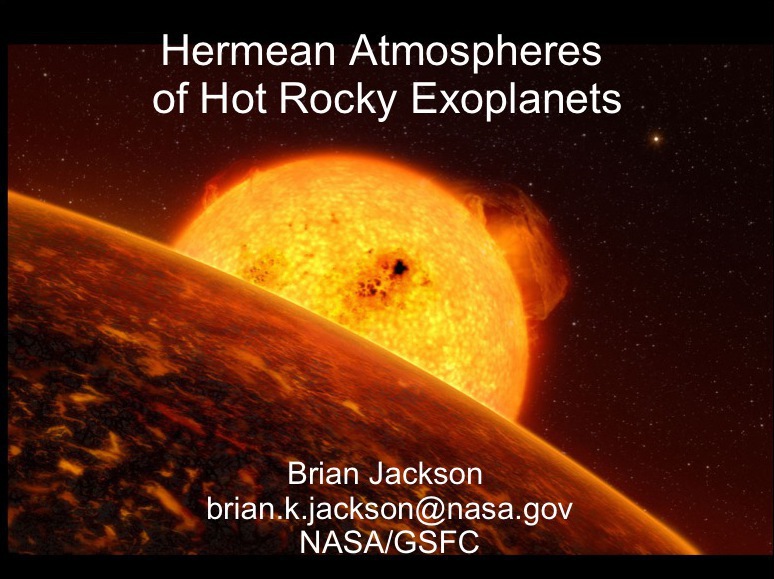Terrestrial Exoplanets > Brian Jackson
Hermean atmospheres
of hot rocky exoplanets
Brian Jackson
NASA/Goddard Space Flight Center, USA
of hot rocky exoplanets
Brian Jackson
NASA/Goddard Space Flight Center, USA



Abstract: Current detection biases mean that most of the initially discovered rocky exoplanets will probably be on very close orbits, with corresponding large surface temperatures. Such planets will likely have tenuous atmospheres composed of vaporized rocky material, similar to Mercury's exosphere. In fact, initial calculations suggest the atmospheres may have column abundances of volatiles, particularly sodium, exceeding the column abundance of Mercury's exosphere by many orders of magnitude. The volatiles likely present in the atmospheres of hot rocky exoplanets may be detectable through observations with sufficiently high spectral resolution. For example, at the column abundance of sodium predicted for CoRoT-7b's exosphere, optical depths at sodium's D1 and D2 resonant scattering features may approach 106. Consequently, the transit depth for CoRoT-7 b in the wavelengths of these features may be as much as 40% larger than out of the features. As for Mercury, detection of such an atmosphere around a hot rocky exoplanet would provide important constraints on the planet's composition. In this talk, we will present the results from models of such putative atmospheres for a range of hot rocky exoplanets orbiting a range of host stars and discuss their detectability.
Additional materials: PDF of slides
ExoClimes 2010, Exeter, Thursday 9th Sep 2010
Additional materials: PDF of slides
ExoClimes 2010, Exeter, Thursday 9th Sep 2010
